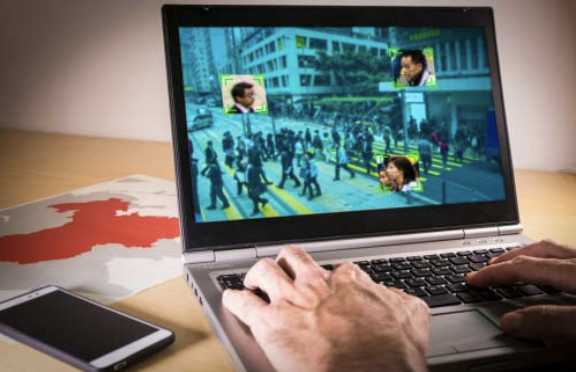Facial recognition technology has been with us since the mid-1960s, when the first rudimentary facial recognition code was written, but it wasn’t until 1997, when ZNFace was developed, that facial recognition technology crept into the mainstream. Despite science fiction predictions of facial recognition invading every facet of life by 1984, we’ve only recently started to see facial recognition permeate day-to-day activities. In this article, we’ll review the basics of facial recognition technology and how it could accelerate discovery in civil and criminal cases.
Facial Recognition – How It Works
Facial recognition technology is a physically non-invasive process that allows for still images or isolated video frames of faces to be compared against a selected database of stored facial images with the goal of finding a match. Facial recognition relies on algorithms that reduce the measurements of certain “landmarks” on a face to a set of data. When a subject’s image is presented to the system for comparison, the system calculates the subject’s landmark measurements and searches the database for an identical set of data. Once located, the system can present a single image, a set of images that fall within a range of proximity, or perform a preprogrammed task such as locking or unlocking an access point or sending a message triggered by an associated match. The accuracy of facial recognition search results is subject to variables such as the number of landmarks measured, the quality of the images, the size of the database, the gender and ethnicity of the subject. The quality of cameras, servers and software can also vary dramatically. Because of expense, cloud-based options can help accelerate facial recognition discovery without the cost burden.
Cloud-based Options for Facial Recognition
A cloud-based facial recognition service allows users to invest in only the locally installed hardware necessary to capture facial images and review the search results. Amazon’s Rekognition, part of Amazon’s AWS services, allows users to upload still images and video and perform a number of analyses, including facial recognition. Aventri, Expo Logic, and NTech Lab’s FindFace, are all among a growing group of cloud-based facial recognition solutions promising to speed up the process and reduce the cost of adding facial recognition and identity authentication services to arenas, convention centers, stadiums, smart cities, smart buildings, and other places holding public events. A primary benefit of these providers is that cloud-based solutions require less investment by the user, and can often be used as a temporary, or stop-gap measure. While the cost varies, some providers advertise services for as little as six cents per attendee, plus the cost of any equipment purchased or leased. It’s possible you may see this type of technology integrated into tradeshows in the future pending privacy regulation.
Facial Recognition Learning
Facial recognition software solutions can enhance security, control access, and prevent loss – but getting the right fit requires looking at the environment and the task. Home and small business security solutions are tailored for smaller environments with less traffic than malls, airports, or city streets. The difference comes down to the ability of the software to learn. All facial recognition software programs require training. The database must be fed with images and comparisons must be evaluated for the software to improve its ability to recognize faces. The more images, the more learning, the more advanced the software programming. In fact, on March 12, 2019, NBC News released a story that IBM uploaded approximately one million photos from photo hosting site Flickr to train its database (https://www.nbcnews.com/tech/ internet/facial-recognition-s-dirty-little-secret-millions-online-photos-scraped-n981921). Google’s technical paper on its facial recognition system, FaceNet, reports training over one thousand hours (https://arxiv.org/pdf/1503.03832.pdf). Many smaller companies simply do not have the time or the personnel to train their facial recognition systems with a million images or a thousand hours.
Community and Social Media Sharing
Companies such as Ring (owned by Amazon) have social media Apps whereby users, through an opt-in mechanism, can allow law enforcement to view specific video footage from the Ring system to assist in solving cases. The site is known as the Ring Neighborhoods Portal. In the future, we anticipate facial recognition will further compress solving particular cases versus relying on local law enforcement’s recollection of a face that may be a “repeat offender.” Ring’s owner, Amazon.com, has in fact filed a specific patent to put its Rekognition facial-identification software into doorbells. If used for good, these types of technologies used in smart buildings and smart cities may have a profound impact on verifying one’s whereabouts and activities.
Irrespective of the technology infrastructure deployed to build a facial recognition system, there is no doubt that the technology is becoming more accessible via an expanded range of offerings. Attorneys, investigators, computer forensics examiners, and law enforcement will be able to increasingly utilize this technology to win cases and accelerate discovery of video footage in more economical ways.
Please direct questions and inquiries about cybersecurity, computer forensics and electronic discovery to info@digitalmountain.com.
